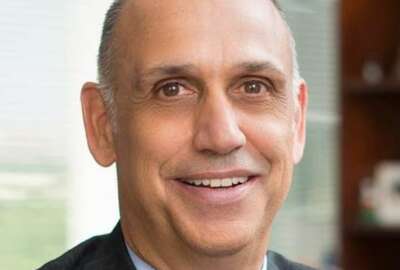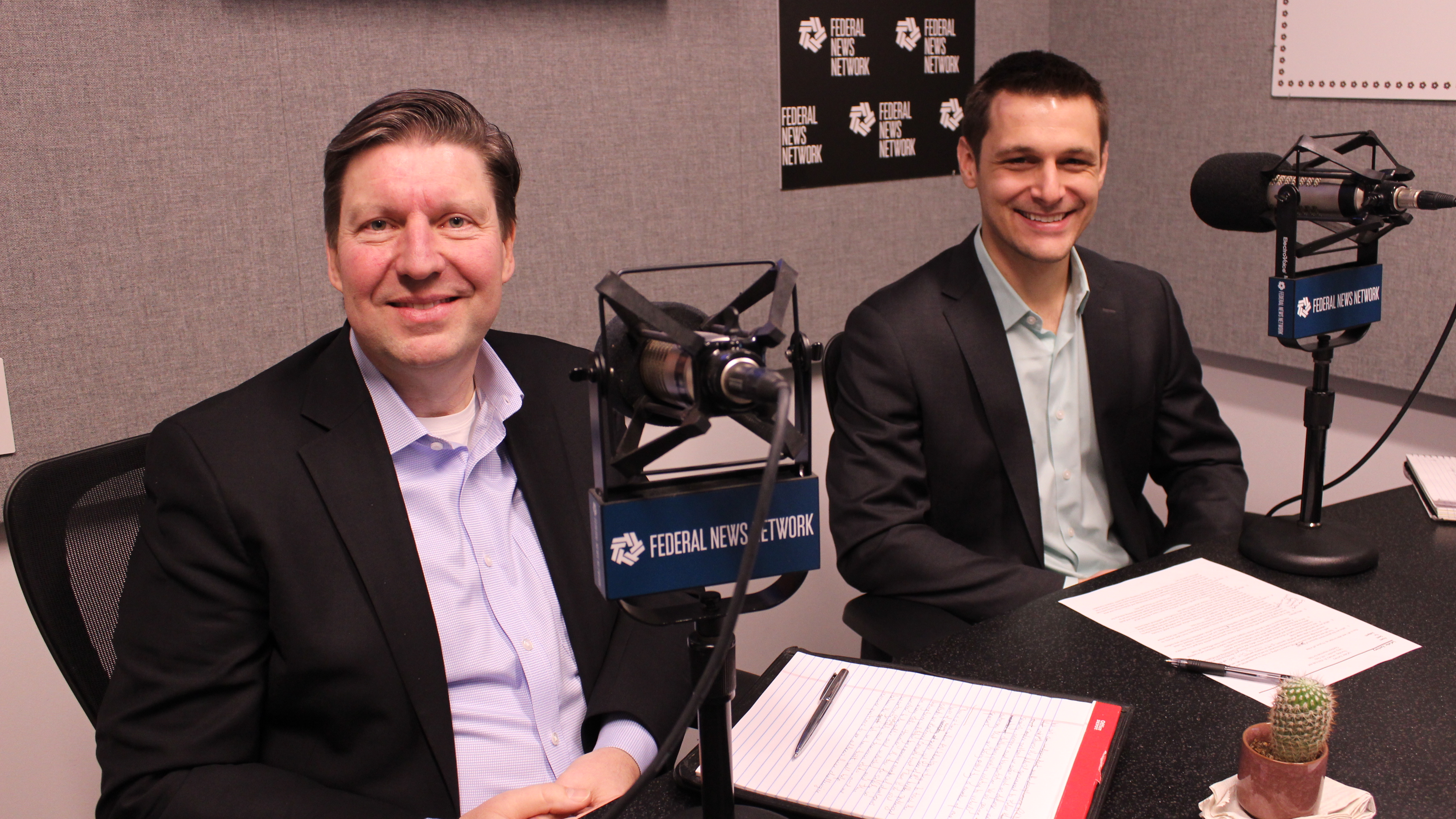

The Mitre Corporation, which operates federally funded research and development centers, has set up a lab to explore mobile autonomous systems.
Best listening experience is on Chrome, Firefox or Safari. Subscribe to Federal Drive’s daily audio interviews on Apple Podcasts or PodcastOne.
The Mitre Corporation, which operates federally funded research and development centers, has set up a lab to explore mobile autonomous systems. It’s already equipped a Jeep Grand Cherokee to give feedback on the challenges of autonomy. To learn more about the process, Federal Drive with Tom Temin spoke with Zachary LaCelle, the lead engineer, and Chris Hill, the director of Transportation.
Interview Transcript:
Tom Temin: Let’s talk about this project. First of all, who is the federal sponsor for this? Chris?
Chris Hill: Well, we’re doing work across the federal government, helping to solve complex problems in defense, national security, aerospace and transportation. And we’re seeing a number of our sponsors who are asking tough questions right now about the impacts of vehicle autonomy. And we’ve put the lab together to help answer those for multiple sponsors.
Tom Temin So it’s multiple agencies then that are behind this?
Chris Hill: We’re certainly looking to support multiple agencies in this work.
Tom Temin: And that includes the Defense Department?
Zachary LaCelle: The Defense Department, Homeland Security and multiple other agencies as well.
Tom Temin: What are you specifically looking at here? What is the research centered on?
Zachary LaCelle: So we’re looking at a few things. We’re looking at the types of information used by autonomous vehicles such as the sensor information or the behavior information of a vehicle. And identifying the data, which is consistent across systems from different vendors, from different companies. And what data is important for vehicle safety? That’s one of Mitre’s primary concerns is the safety of the systems.
Tom Temin: Zachary, you bring up an important point. There are a lot of companies chasing this whole autonomous thing that people who operate like Uber and Lyft I guess, have research programs, and you’ve got the Googles of the world. I guess the traditional automobile manufacturers are all chasing this. What is the strategy for not overlapping everyone’s work, but somehow sharing information that’s produced in terms of best practices?Zachary LaCelle: So Mitre provides some unique experiences here. We’re not trying to compete with industry. Our job is not to make a better autonomous vehicle. Nor do we want to. Mitre brings some unique things to this effort that I think maybe industry isn’t looking at. Mitre has a wide bench of of domains. Mitre has cybersecurity researchers, systems engineers, experts in policy, a very wide range of people, aviation safety, for instance. And we can bring all those types of researchers to bear on this really unique and challenging aspect of autonomy.
Tom Temin: Chris, is there some federal vision that transportation and motion of vehicles is going in some grand direction that might affect both the civilian side and the military side?
Chris Hill: I think there’s certainly federal visions about where this should be headed. The Department of Transportation, in particular, has developed guidance so called AV 4.0 guidance to help chart the direction of a AV development. But I think there’s still a lot of work that needs to be done, and right now, perhaps not a overall guiding safety framework for how you accomplish that. And that’s an area where we think we can provide support.
Tom Temin: Maybe the federal government is the locus of where the safety standards will eventually reside?
Chris Hill: Yes, certainly the federal government, in many instances, safety is their primary mission, certainly for the transportation agencies. So that’s clearly of importance to them. But they want to be able to make sure we have safe autonomous vehicles on the roadway, but in a way that doesn’t over-regulate. Nor does it discourage private industry from innovating and developing new technologies.
Tom Temin: Zachary, what exactly does the Jeep Grand Cherokee do for you and what What’s on there?
Zachary LaCelle: So we have a wide variety of capabilities on the Jeep. Our goal with this platform was to provide a system that had a representative sample of all the types of technology you might find on autonomous and automated vehicles. So we have a wide range of sensors, a wide range of computing power, and the ability to control the vehicle itself. And the goal of this test-bed is to provide parody with what industry is doing, but also to provide a place where we can compare different and disparate technologies and software systems, algorithms and provide feedback and recommendations to our sponsors.
Tom Temin: Where do you run it?
Zachary LaCelle: Most of our operations are done local to Mitre. A lot of the tests that we do don’t require autonomous driving, so we can drive around and take data wherever we’d like. On for autonomy tests we’re identifying tracks that we’re able to operate at.
Tom Temin: Chris, what is the ultimate deliverable to the government that you will anticipate from this project?
Chris Hill: Well, I don’t think there’s any single deliverable. We anticipate that will take on a number of research topics for federal sponsors, and each of those will define particular outputs that they want. For us, I think we’re really looking to create something that becomes a a resource capability that anybody can take advantage of.
Tom Temin: Now, in the real world, there are a couple of domains right now for autonomy. One you’ve got, the FAA and NASA dealing with how to operate both unmanned and manned aircraft in the nation’s airspace. And then on the ground, you’ve got all these organizations looking at trucks and cars. And then I guess maybe there’s a thirddomain, which is military, which tends to not operate on standard roads and bridges like everybody else. So is there any area of data or algorithms or learnings that are possibly cross domain in this whole area of autonomy?
Zachary LaCelle: So I think that’s one of the wonderful things about being an autonomy researcher is is the algorithms the capabilities, the sensing really crosses domains, and this is a great opportunity we have to share knowledge and capabilities between defense and between transportation, air, ground. The defense industry has been working on autonomous vehicles for a very long time. People don’t realize this, but it’s been going on for decades. And now we have the commercial side that’s developing really novel, interesting solutions to these problems. And I think there’s a
lot that can translate between domains.Tom Temin: At some point you have to make a division between autonomous and simply remotely operated. Because that even goes back further in some sense
Zachary LaCelle: Absolutely. The entire spectrum of autonomy really is a spectrum. There’s pieces of it that apply between domains of different capability levels. So like you mentioned, tele-operation, all the way up to fully self driving.
Tom Temin: What is the scope of the operation that you have going at Mitre? Is there an end-point? Is there some deadlines? What does the project look like from a program standpoint?
Zachary LaCelle: The lab is focused on being a resource for Mitre and for our sponsors. So there’s no set deadline for the lab itself. We really see this capability as continuing and updating as technology and algorithms improve. We’re looking at doing some research on safety standards and certification processes, and we hope to have results for that soon. But we really see the lab as a continuing
resource.Tom Temin: Do you have federal sponsors at this point or are you hoping to attract them once the capability is set up?
Chris Hill: We certainly do have some federal work that’s being undertaken right now, and we’re having lots of conversations with other federal agencies about opportunities to use this resource.
Tom Temin: Who are the early in agencies? Can you say?
Zachary LaCelle: We can say that there’s people from the defense community that are interested in what we’re doing. We have some small projects looking at specific challenges that they face.
Tom Temin: Maybe DOT will come in at some point, I guess you’re hoping?
Chris Hill: We would certainly like to engage DOT in some of these conversations,
Tom Temin: What else do we need to know about this project?
Chris Hill: Well, I think this is a time when automated vehicle technology is beginning to touch the lives of many people. Yet some of the highly publicized setbacks are damaging consumer trust. There’s testing going on by a number of different developers in many states right now. But I really don’t think there’s a clear understanding of what the bar for a safe solution is right now. We’re really hoping that the work we’re doing in the lab can help define that safety requirement.

Copyright © 2025 Federal News Network. All rights reserved. This website is not intended for users located within the European Economic Area.



